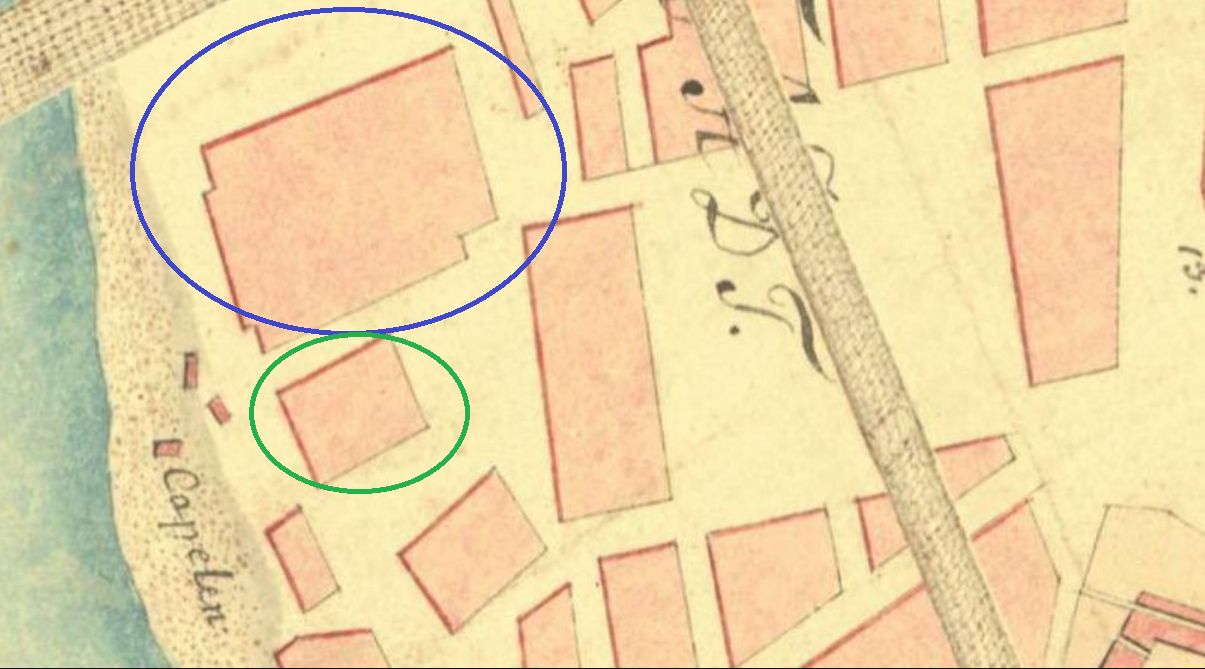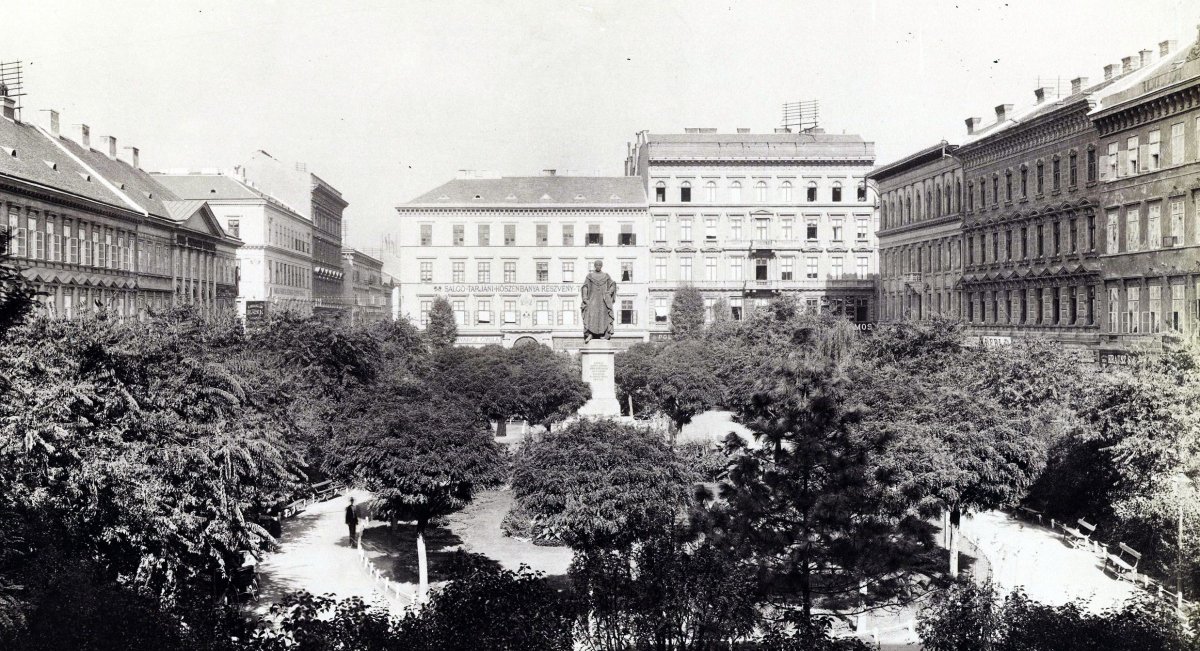The Salt Office was built in the vicinity of the Pest embankment, as the valuable goods were transported by ship. On the map below, which shows the state of the end of the 18th century, the salt was stored in the building marked in blue, and the green circle indicates where the residents could arrange the administration, especially the payment of the tax. They probably did not have a particularly aesthetic appearance, but they occupied a huge area: on the north, today's Mérleg Street, and on the south, Wekerle Sándor Street was their border. Therefore, Palatine Joseph, who was a patron of the city's development, decided to relocate the office in 1820.

Map of Pest in 1793: the square-shaped space is today's Erzsébet Square, to its left, along the Danube, are the buildings of the Salt Office (Source: Hungaricana.hu)
Based on the ideas of the Palatine, János Hild - the father of one of our greatest architects, József Hild - had already prepared a plan for this area in 1805. In this sense, two squares under each other would have been created, lined with rows of palaces. Although proposals have been made to raise the financial resources needed for the investment, the matter had stalled for some time.
Tax and customs matters were also handled at the Thirtieth Office, south of the Salt Office - that duty levied on goods in commercial circulation. However, at first the relocation affected only the former institution, whose buildings were demolished, and the vacated area was sold for construction under the supervision of the Beautification Committee established by the Palatine (back in 1808). The Thirtieth Office remained in place, causing much annoyance to those working to beautify the cityscape.

Map of Pest in the early 1820s: the rectangular square was roughly outlined, but the garden of the Thirtieth Office (marked with a blue circle) was still in there (Source: Hungaricana.hu)
According to the plan, the square to the north (today's József Nádor Square) should have taken the shape of a regular rectangle, but the garden of the Thirtieth Office was still in its south side. Eventually, however, development prevailed in 1823, and the garden was regulated so that the geometric form could emerge. However, the name of the public area still quoted the old days: Só Square. The town council changed this in 1824, expressing their respect for the palatine couple: the square was named József Sqaure after the Palatine, and the street next to it was named after his wife, Dorottya. Needless to say, it was a great honour to have a public space named after someone who is still alive.

Visual design of József Square by Carl Vasquez Pinos, without the building of the Thirtieth Office, 1837 (Source: National Széchényi Library Map Collection)
Later, the idea arose to merge József Square with the square to the south of it (today's Vörösmarty Square), which was blocked only by the Thirtieth Office. A design render was also made for this, but the matter was not taken seriously. The Palatine did not even support this, although he did not look at the office with happiness: he would have demolished it and wanted to build a new town hall in its place. In the end, this did not happen either, in 1842 the old town hall was enlarged according to the plans of József Hild. The popular Palatine died in 1847, so he could no longer see the demolition of the Thirtieth Office, which was finally done in 1859. However, the plot was parcelled out and four Renaissance-style palaces were built on it.

Rudolf von Alt's drawing shows the square from the other direction in 1845, opposite is Nádor Street, which is also reminiscent of József (Source: wikipedia.org)
Around the square, of course, buildings were erected earlier in the 1820s in the then fashionable classicist style. Of these today, only the Gross Palace on the corner of Fürdő Street (now József Attila Street) can be seen, which was designed by József Hild in 1824 to the order of Ferenc Gross. In fact, the Kehrer House opposite it, on the other side of the square, still retains traces of the 1820s, as it was also designed by József Hild in 1823, but it was later converted into a Neo-Renaissance style and extended with a floor.

The Gross Palace today (Photo: Péter Bodó/pestbuda.hu)
Thus, József Nádor Square has been a testimony to the city-beautifying activities of its namesake for almost two hundred years. The grateful posterity also erected a statue for him that has adorned the centre of the square since 1869.
Cover photo: József Nádor Square between 1890 and 1894 (Source: Fortepan/Budapest Archives/Photographs by György Klösz, Reference No.: HU.BFL.XV.19.d.1.07.200)




































Hozzászólások
Log in or register to comment!
Login Registration